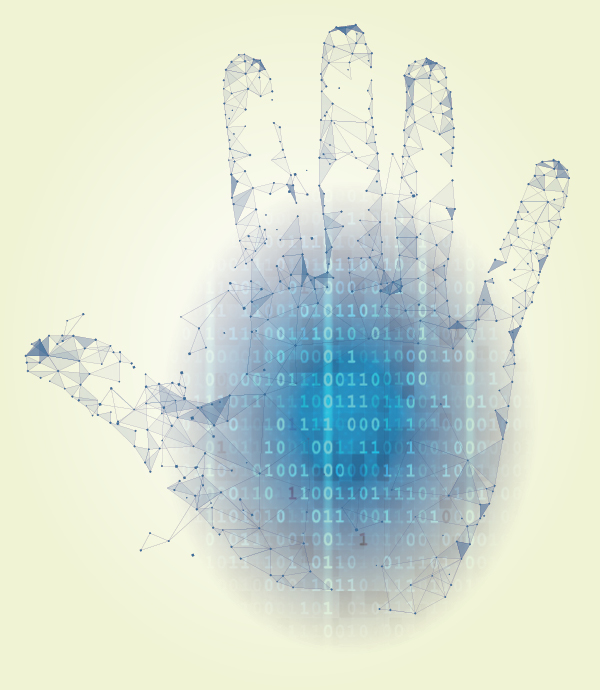
Classifying a lot of data, innovating in big data
When Intel co-founder Gordon Moore published his Moore’s Law principle in 1965, he may not have realized how his theory would revolutionize the way people regarded the speed of technology to transform the status quo.
ore predicted that every two years, the industry would double the number of transistors that could fit on a silicon chip, and costs would go down. While the rate of introducing smaller-scale chips has slowed, the fast-moving world of technology has not slowed, and people are increasingly more connected to things and to each other than ever before, leaving digital footprints at every step along the way.
Data are everywhere, and companies that own data are more powerful than ever. Researchers at the Betty Irene Moore School of Nursing at UC Davis, founded by the Gordon and Betty Moore Foundation, use data-driven insights to change the face of health care—from working with a lot of data to “doing” big data. For example, Tae Youn Kim works to translate the notes taken by clinicians at the bedside using standardized terminologies to develop predictive models for improving patient outcomes.
“A lot of clinical data is not standardized, so it’s not easy to process patient data for clinical decision-making,” says Tae Youn Kim, an associate professor and informatics researcher. “For example, I found more than 200 ways to document pressure ulcers. If we cannot standardize how that condition is entered into an electronic health record and how we aggregate such data, it would be challenging to create a report that ultimately improves patient care.”
By working with the International Council of Nurses, which is a federation of more than 130 national nurses associations, Tae Youn Kim seeks to further extend the development of the International Classification for Nursing Practice, a logic-based nursing terminology to support nursing practice, education and research. The still-evolving terminology provides a formally defined, machine-readable vocabulary and its semantics to foster communications within nursing and across other health care disciplines, as well as to promote the automated data processing. Currently, more than 130 health and nursing terminologies exist across the disciplines, requiring harmonization of those terminologies for coordinated care.
The challenge with a large amount of data is that people must use it. Even when patients describe their own symptoms, the descriptions vary across people and cultures. Language cannot be standardized. The data are inherently unreliable, coming from different sources and different forms. Enter big data: the process of applying an algorithmic, processing or analytical technique to understand that data.
“In big data, you must pull all the data together to apply your innovative techniques,” says Katherine Kim, an assistant professor and eHealth expert. “Big data does not rely on standardization. It helps us understand what is happening, and more importantly, why it’s happening, so we can develop an intervention at the moment it’s most impactful for patient and clinician.”
For example, if researchers want to know how many times cancer patients report feeling tired or nauseous, they can query a group of electronic health records and produce a number. But in order to determine why patients experience these symptoms, researchers must apply big data techniques, which, in turn, lead to a better understanding of how to provide the best care.
Katherine Kim is part of a research team developing PCORnet, a national patient-centered clinical research network, to bring research and care together to explore the questions that matter most to people and their families. The current $16 million pSCANNER project grew out of a project she began with colleagues at UC San Diego on the first day of her doctoral program at UC Davis. In a newly published chapter in the textbook, Big Data-Enabled Nursing, Katherine Kim collaborates with fellow doctoral alumnus Satish Mahajan from the School of Nursing, and leaders at the Patient-Centered Outcomes Research Institute (PCORI), including Executive Director Joe Selby, to detail the pSCANNER work.
In the chapter, “Answering research questions with national clinical research networks,” the authors explain the need to expand the nation’s capacity to conduct clinical studies by taking advantage of data gathered in which patients receive care and then put it in a form that can be used and applied across platforms and health systems.
With federal programs to promote the adoption of electronic health records, nursing documentation is even more critical to care within traditional clinical settings, but also in environments, such as home health and telehealth. Nursing data such as assessments of social determinants of health and patient problems, shared care plans and nursing narratives are often the source of person-centered health processes and person-relevant outcomes.
In recent publications, Tae Youn Kim demonstrated how data standardization and big data analytic techniques could be used together in determining nurse care coordinators’ contributions to supporting self-management of chronic conditions in older adults. “Without cutting-edge methods, we cannot aggregate and exchange massive amounts of clinical data across settings and conduct research,” Tae Youn Kim says. “In order to make any influence in health policy, we must translate raw data, and give it real meaning and actionable context.”
As the speed of technology shows no slowing down and the innovation in technology devices brings more clinical tools to the home, innovation in data analytics is critical in moving care forward.
“We need the classification to make data more easily computable and big data approaches for the information that will never be classified,” Katherine Kim says. “You need both ends of the spectrum, coupled with nursing engagement and collaboration.”

